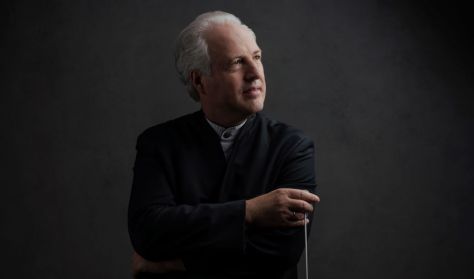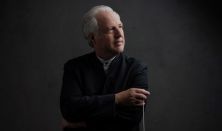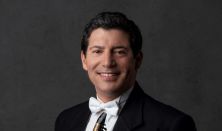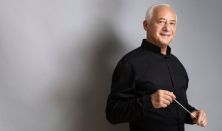Haydn
Mozart
Rusinek
Honeck
december
13–14–15.
Zeneakadémia, Nagyterem
13. péntek
14. szombat
15. vasárnap
Joseph Haydn: 93. (D-dúr) szimfónia, Hob. I:93
Wolfgang Amadeus Mozart: A-dúr klarinétverseny, K. 622;
39. (Esz-dúr) szimfónia, K. 543
Michael Rusinek (klarinét)
vezényel: Manfred Honeck
A Haydn és Mozart műveit bemutató sorozat októberi hangversenyéhez hasonlóan ezúttal is egy Haydn-szimfónia, Mozart egyik fúvós versenyműve és utolsó három szimfóniájának egyike hallható. A koncerten a bécsi mesterek honfitársa, Manfred Honeck dirigálja a Fesztiválzenekart, aki nemcsak a Bambergi Szimfonikusok tiszteletbeli karmestere, de több mint másfél évtizede a Pittsburgh Symphony Orchestra zeneigazgatója is. Az amerikai együttes első klarinétosa, Michael Rusinek Mozart utolsó befejezett műve, a klarinétverseny szólistájaként áll a BFZ élére.
Előtte az Esterházy-udvar kötelékéből szabaduló Haydn hangja szólal meg a londoni szimfóniák egyikében. A koncertet a „Jupiter” és az évadban is hallható „nagy” g- moll testvérdarabja, Mozart 39. szimfóniája zárja.
Hiába próbálkozott Johann Peter Salomon, hogy Angliába csábítsa a világszerte ismert zeneszerzőt, Haydn csak Esterházy „Pompakedvelő” Miklós herceg 1790-es halálát követően fogadhatta el a londoni hangversenyszervező felkérését. A meghívás eredménye számos ováció övezte koncert és tizenkét szimfónia lett, amelyeknek a képzett arisztokrata közönség helyett a széles publikumot kellett elkápráztatniuk. Első angliai útjának nyitókoncertjén szólalt meg Haydn 93. szimfóniája is. A harcias lassú bevezetésből és keringőszerű főrészből álló első tételben fontos szerepet kap a fagott, akárcsak a pasztorális lassú tételben vagy a Beethoven előfutárának tekinthető, már-már erőszakos menüettben. A trombitás- üstbobos fináléban a szólócselló kap váratlan és humoros feladatot.
Nem lehetünk elég hálásak Anton Stadlernak, hogy megihlette Mozartot, aki neki komponálta a „Kegelstatt” triót, a klarinétötöst és a klarinétversenyt is. Utóbbit eredetileg basszetkürtre álmodta meg a szerző, ám végül arra a speciális mély regiszterrel rendelkező hangszerre írta, amelynek Stadler virtuóza volt. A halála előtt alig két hónappal elkészült művet Mozart már nem hallhatta. A darabban, amelyet nyugalom és visszafogott virtuozitás jellemez, nem találunk oboákat, sőt a basszust is csak ritkán támogatja meg a nagybőgő. A lágy hangzást tovább finomítja, hogy a háromtételes műnek nincs tipikus gyorstétele. Van viszont benne színgazdagság, békés dal és szelíd, üde finálé.
Az oboáknak a szünet után sem kell visszatérniük: 39. szimfóniája az egyetlen, amelyben Mozart nem használja őket. Az 1788-ban, mindössze két hónap alatt komponált három nagy szimfónia nyitódarabjában cserébe fontos szerepet kap a klarinét. Talán Stadlerre gondolt ekkor is? Lehet, hogy elő is adták? Sok a kérdés, kevés a válasz, de az biztos, hogy az Esz-dúr mű új mozarti korszakot nyitott. A barokk tanulmányokat saját játékosságával ötvöző szerző tőle váratlan módon terjedelmes, drámai lassú bevezetővel indítja a később kontrasztokkal gazdagodó nyitótételt. Lírai, már-már himnikus lassú tétel következik, majd könnyed, áttetsző menüett szól a klarinétot főszerephez juttató rusztikus középrésszel. A dallamokkal máskor pazarlóan bánó Mozart a finálét egyetlen témára építi fel.





